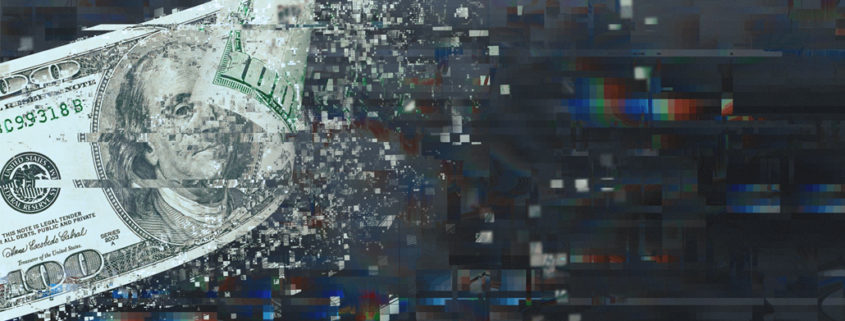Is the Future Going to be Cashless?
When and Where Will We See the First Fully-Cashless Economy?
The post-cash economy has been a popular sci-fi fixture for decades. People swiping cards or mobile devices to pay for everything they consume daily seemed like a far-off future. However, the cashless economy is no longer the stuff of science fiction…it may be just around the corner.
Let’s examine the pros and cons of a totally-digital economy, and what is already being done to make it a reality.
Why Ditch Cash?
Believe it or not, cash is incredibly expensive. Cash can easily be stolen, destroyed, or underreported for tax purposes. Add to that the Federal Government’s costs to mint and distribute new bills and remove old ones from circulation. In all, the US economy loses half a trillion dollars every year due to cash!
Of course, it’s not just a macroeconomic question. On an individual consumer level, more and more US consumers turn to non-cash purchases as a matter of personal preference.
Here in the US, about 90% of those transactions are still carried out using credit and debit cards. However, we see a growing number of alternative payments technologies like PayPal, Apple Pay, and Google Pay catching on. These alternative payments are already big in other markets like Germany and China for a few reasons:
- Convenience: No fumbling around counting out bills and coins; just scan a mobile device and you’re good to go.
- Protection Against Loss: If you lose cash or it gets stolen…you’re out of luck. No such issue with mobile payment apps.
- Security: Mobile payments use two-factor authentication; you sign-in to the device, then enter at least one other form of ID like a PIN or thumbprint scan to authorize a sale.
Drawbacks to Going Cashless
Of course, we still have a few obstacles to adoption that we need to overcome before we can really go cashless. First up is decades of entrenched banking practices, rules, and infrastructure.
We’d need to re-envision how we think about the economy on a global scale. Cash remains the dominant payment method in the world, especially where people have limited access to banking services.
Many of these individuals live in regions with less-developed infrastructure, and access to new technologies is limited. There’s also the problem of development occurring at an unequal pace, with accelerating wealth inequality in developing economies creating more stratified societies. Any move to go cashless would leave a lot of these people shut-out of the economy.
However, the solution to all those problems could be resting in your pocket right now.
Mobile Devices are the Key
Mobile-enabled alternative payments are catching on in developed nations, but they’re having the biggest impact in developing economies. In places where consumers have access to mobile devices but limited availability of banking, mobile payments open the door for millions of people to join the digital economy.
The limited payments technologies in these countries play to their advantage in many ways. They don’t have the entrenched payments culture and legacy infrastructure we have in the US, which makes them more agile and adaptable to new changes.
Look at India, for example. Just five years ago, cash accounted for 98% of all transactions conducted in the country. Now, India is on its way to potentially be the first cashless economy in the world. The Indian government jump-started this process back in 2016 by banning much of the country’s currency in a bid to fight corruption. This, in turn, pushed billions of dollars into the non-cash economy and setoff a wave of new investment and digital adoption.
Markets that were held-back from joining the digital economy by a lack of development in payments technology could leap-frog developed nations to join the global economy’s next evolution.
The Future is Here Today
There are a few technologies that are already making waves in digital market development, and they’re impact will only become more significant as we move forward. Here are just a few of the most obvious examples:
- P2P Payments: Tools like Venmo enable instantaneous peer-to-peer transfers, no need to involve the bank.
- Blockchain: Faster resolution plus better security. Blockchain could allow payments to clear in seconds, rather than days.
- Digital Wallets: Forget carrying around a physical billfold when you can make secure payments using your phone.
- P2P Lending: No need to go to the bank for a loan; you can borrow straight from fellow consumers and cut the middle man.
It’s still going to be quite a while before we’re ready to ban the bills and go completely cashless. However, it’s a good idea to start planning and adapting to that reality.
It doesn’t have to be a point of anxiety. If we make the transition wisely, a cashless economy could mean easier, faster, and more convenient payments and financing for everyone.



